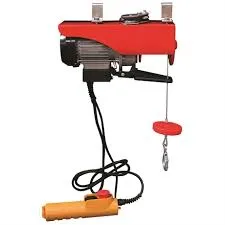


Understanding Crane Scale Dynamometers A Key Tool in Weight Measurement
Crane scale dynamometers are vital instruments used in industrial and commercial settings to measure the weight of heavy objects safely and accurately. These scales are designed to work in conjunction with cranes, hoists, and various lifting systems, providing real-time weight readings to ensure that loads do not exceed safety limits during lifting operations. This article will explore the functionality, applications, advantages, and maintenance of crane scale dynamometers.
Functionality of Crane Scale Dynamometers
A crane scale dynamometer typically consists of a hook attachment, a load cell, and an electronic display. The hook is used to connect to the object being weighed, while the load cell converts the force exerted by the weight of the object into an electrical signal. This signal is then translated into a weight measurement displayed on the screen. Most dynamometers come with features like overload alarms, the ability to measure dynamic and static loads, and some even have Bluetooth connectivity for remote monitoring.
The design of crane scale dynamometers allows for easy portability. They can be hung from overhead structures, eliminating the need for a fixed weighing platform. This flexibility is particularly beneficial in environments where space is limited or where heavy items need to be moved frequently.
Applications
Crane scale dynamometers are widely used across various industries, including manufacturing, construction, shipping, and warehousing. In manufacturing, they are employed to weigh raw materials before processing. Construction sites use them to weigh large structural elements, ensuring that hoists and cranes operate within their capacity. In warehousing and logistics, they assist in managing inventory by providing precise weight readings of goods.
Additionally, crane scale dynamometers are beneficial in the transportation sector, where accurate weight measurements are crucial for compliance with regulations regarding vehicle load limits. This ensures that transportation is both safe and economical, preventing potential accidents caused by overloading.

Advantages
One of the primary advantages of crane scale dynamometers is their capacity to handle heavy weights while maintaining high accuracy. Unlike traditional scales, which may have weight limits or require assistance for large items, dynamometers can weigh large loads without needing an additional platform.
Another advantage is their ease of use and portability. Operators can quickly attach the dynamometer to a crane or hoist and obtain weight readings without significant setup time. Furthermore, many models offer additional features such as weighing in different units (kilograms, pounds), peak hold functions, and tare weight adjustments, enhancing their usability in diverse situations.
Maintenance
To ensure longevity and accuracy, proper maintenance is essential for crane scale dynamometers. This includes regular calibration to account for any wear and tear that may affect readings over time. Operators should also perform routine inspections for any signs of physical damage, such as cracks or corrosion, particularly in harsh environments where scales may be exposed to moisture and chemicals.
Moreover, it is vital to keep the electronic components free of dirt and debris to maintain an unobstructed display and accurate functionality. Following the manufacturer’s guidelines for maintenance schedules and procedures will help ensure that the dynamometer remains a reliable tool in any weight measurement task.
Conclusion
In summary, crane scale dynamometers are indispensable tools in various industries for measuring heavy loads safely and accurately. Their functionality, versatility, and ease of use make them a preferred choice in environments where large items are frequently lifted and weighed. With proper maintenance, these instruments can provide reliable service, contributing to safer and more efficient operations in lifting and transporting heavy materials. As industries continue to evolve, crane scale dynamometers will likely remain a key component in maintaining safety and efficiency standards.



